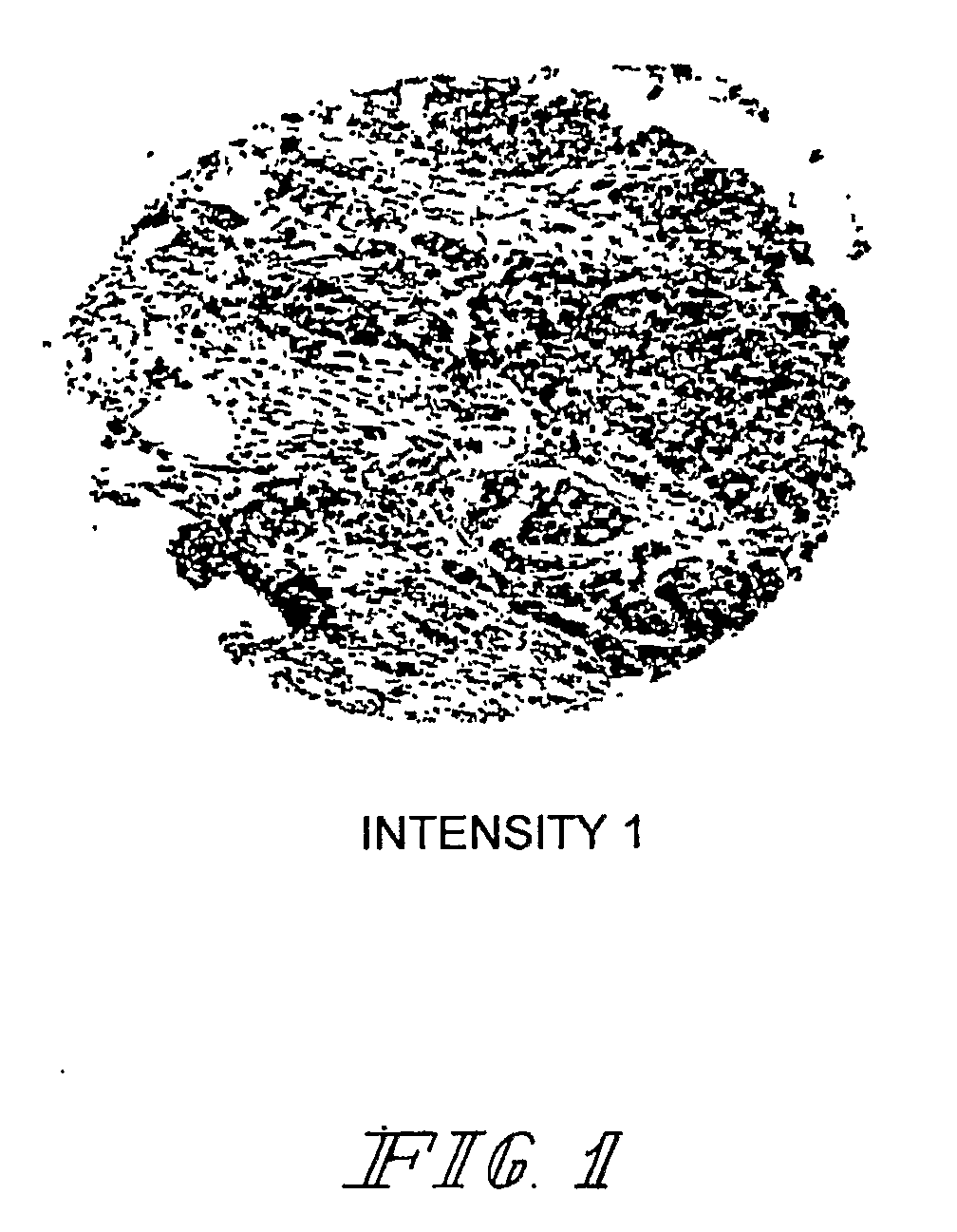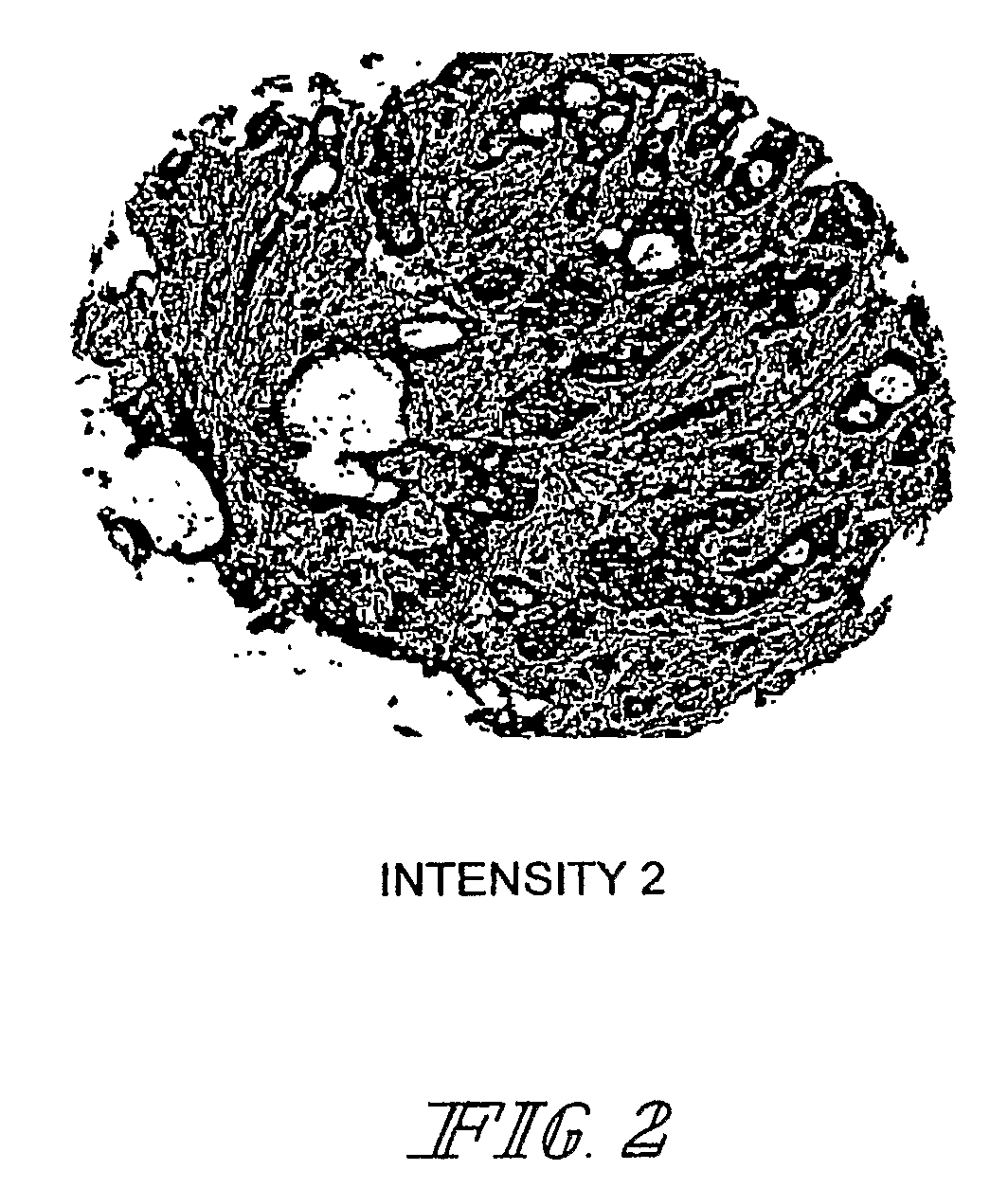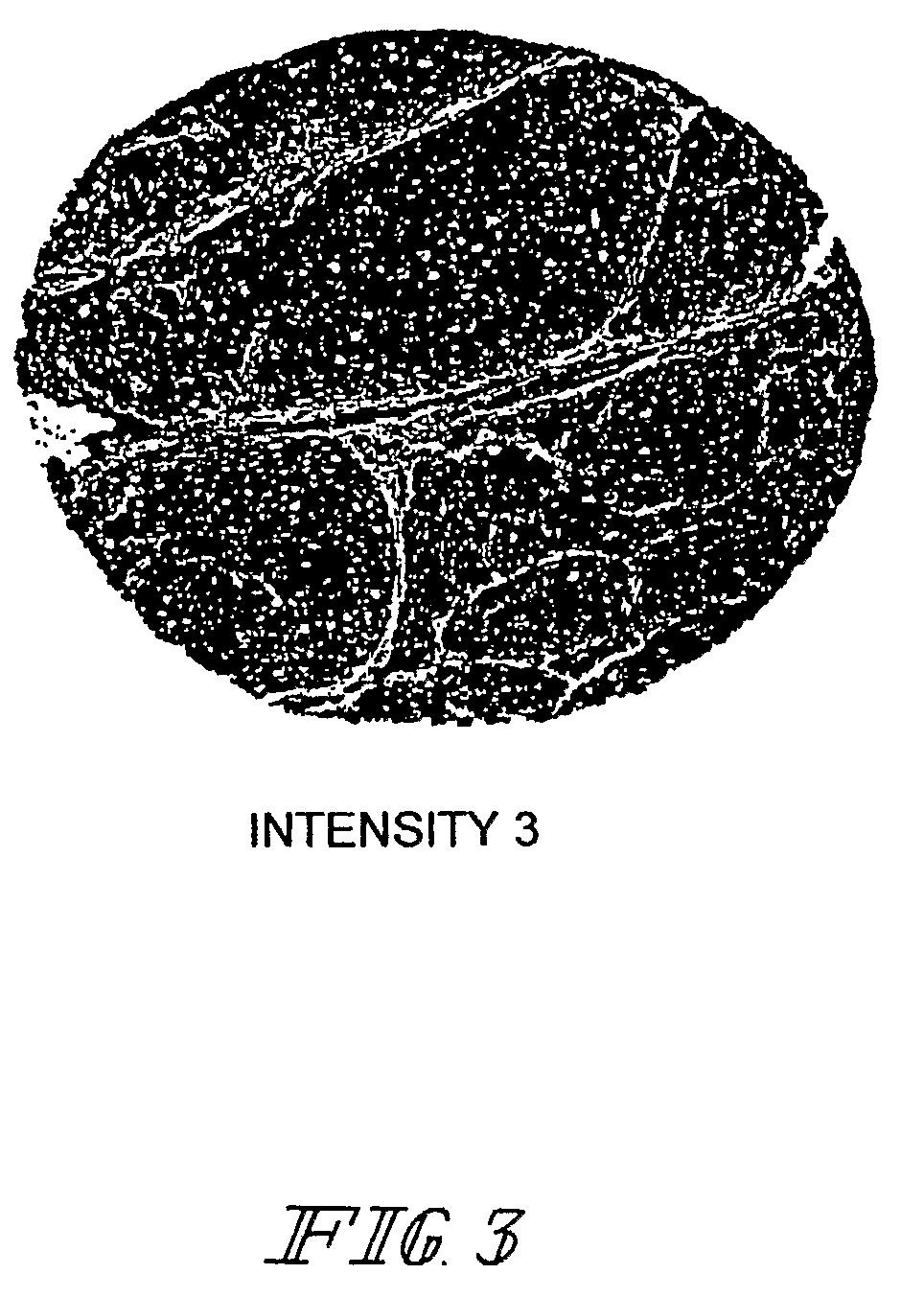Method for Cancer Prognosis Using Cellular Folate Vitamin Receptor Quantification
- Summary
- Abstract
- Description
- Claims
- Application Information
AI Technical Summary
Benefits of technology
Problems solved by technology
Method used
Image
Examples
example 1
Tissue Samples
[0071]A tissue microarray of invasive breast cancers selected from women with divergent clinical outcomes was constructed. Specifically, of the 67 samples included, 34 were obtained from women who were free of recurrence for a minimum of seven years from diagnosis. The other thirty-three specimens came from women whose disease recurred less than 3.5 years after diagnosis. To find markers relevant to node-negative disease, the set was enriched with node-negative samples. All cancers were diagnosed in 1984-1985, assuring sufficient follow-up for the good outcome group.
[0072]The patient and tumor characteristics are shown in Table 1. The sample set was constructed to provide roughly equal numbers of women with early versus no (or late) recurrence. As mentioned, node-negative samples predominated to find discriminatory markers in node-negative disease. Fifty-two women had node-negative disease. Fifteen women had node-positive disease. There were 34 T1 and 33 T2 tumors (T1=...
example 2
Antiserum Preparation
[0074]Polyclonal antiserum (PU-17) to the folate receptor was from Endocyte, Inc. Briefly, bovine milk folate binding protein was purchased from Sigma Chemical Co., and was affinity-purified on an immobilized folic acid column, and emulsified with Freund's adjuvant before being used to vaccinate New Zealand white rabbits according to established procedures. Two weeks after a second boost of the antigen along with incomplete Freund's adjuvant, blood was drawn and the antiserum was collected.
example 3
Antibody Purification
Reagent Preparation
[0075]1. Collection Buffer: 1 M phosphate, pH 8[0076]To approximately 450 mL of deionized water, 67.2 g of Na2HPO4 and 0.367 g of NaH2PO4.H2O was added. The mixture was stirred until dissolved and was adjusted to pH to 8.0 with 1 N HCl or NaOH. The final volume was brought up to 500 mL with deionized water, and filtered with Nalgene 500 mL 0.22 μm filter unit.
[0077]2. Wash Buffer: 10 mM phosphate, pH 6.8[0078]Five mL of the 1 M phospate buffer was diluted, pH 8 into approximately 450 mL deionized water. The pH was adjusted to 6.8 with HCl and the final volume was brought up to 500 mL with deionized water. The solution was filtered with a Nalgene 500 mL, 0.22 μm filter unit.
[0079]3. Elution Buffer: 0.1 M Glycine, pH 2.5[0080]To approximately 450 mL of deionized water, 3.75 g of glycine was added. The solution was stirred until dissolved and the pH was adjusted to 2.5 with HCl. The final volume was brought up to 500 mL with deionized water and w...
PUM
 Login to View More
Login to View More Abstract
Description
Claims
Application Information
 Login to View More
Login to View More - R&D
- Intellectual Property
- Life Sciences
- Materials
- Tech Scout
- Unparalleled Data Quality
- Higher Quality Content
- 60% Fewer Hallucinations
Browse by: Latest US Patents, China's latest patents, Technical Efficacy Thesaurus, Application Domain, Technology Topic, Popular Technical Reports.
© 2025 PatSnap. All rights reserved.Legal|Privacy policy|Modern Slavery Act Transparency Statement|Sitemap|About US| Contact US: help@patsnap.com



